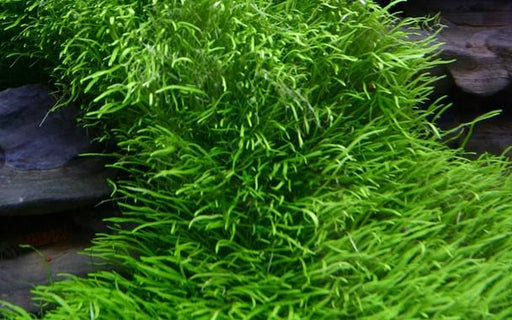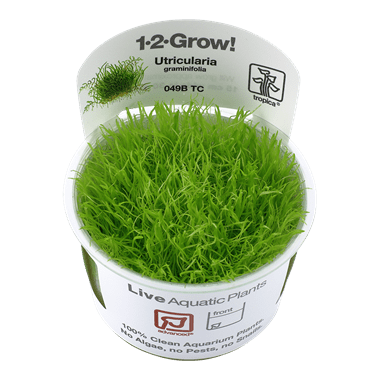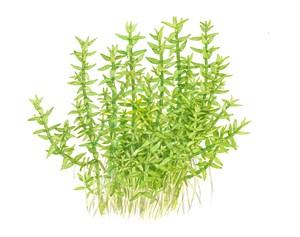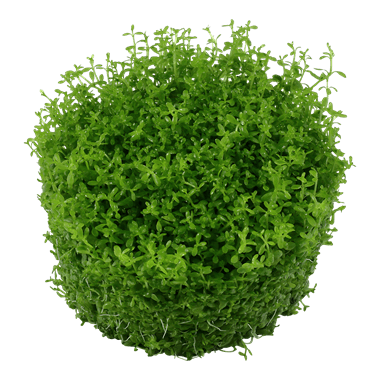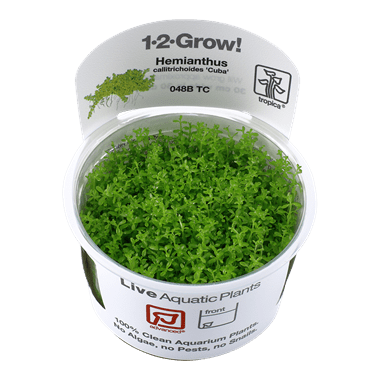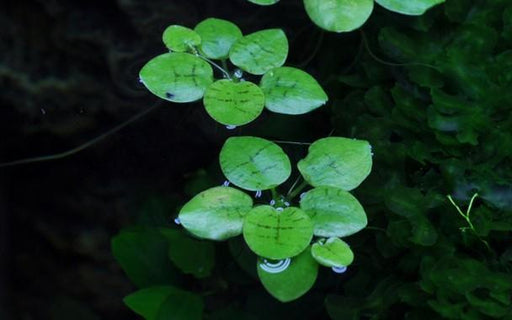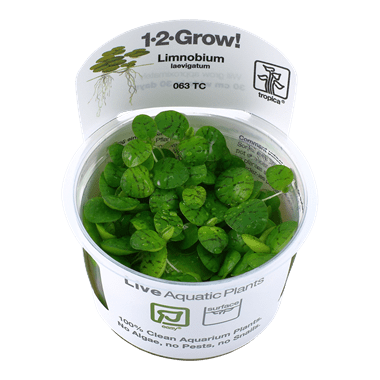
TCulture Acorus Gramineus (Pot)
The Grass-leaf sweet flag or Japanese rush, Acorus gramineus, is widespread in East and Southeast Asia. It occurs i.a. at swiftly flowing, rocky forest streams and waterfalls, between pebbles, also clinging on rock by its roots. In these habitats, it is adapted to floods with strong current.
Acorus gramineus is an old ornamental plant. There are several cultivars such as the white-striped 'Variegatus'. We offer the dwarf cultivar 'Pusillus' that gets only about 10 cm high. It is also named as a variety, Acorus gramineus var. pusillus. Otherwise, wild types of Acorus gramineus may get 30-50 cm tall.
The Japanese rush is often regarded as of limited value for aquariums. However, we found out that at least the Dwarf sweet flag, Acorus gramineus 'Pusillus', can be grown permanently submerged. Provided that the rhizome is not buried into the substrate but fastened to objects such as stone or wood where it attaches itself by its roots, or fixed to the ground. The growth is very slow, and with time side branches on the rhizome may appear that can be cut off for propagation. We recommend complete macro- and micronutrient supply via the water column, CO2 addition and good current. Medium lighting is sufficient. Acorus gramineus 'Pusillus' prefers rather cooler temperatures; the optimum lies at 18-23 °C.
As a terrestrial plant, the Dwarf sweet flag is very easy to grow. The substrate, e.g. customary potting soil, needs to be moderately moist but not wet. The plant can overwinter cold, but frost-free.
This grass-like, decorative plant fits particularly well to layouts that are inspired by rocky stream habitats. It is also well suited for cold water aquariums. Its use as an "epiphyte" for the hardscape is still hardly known but worth trying. The Dwarf Sweet Flag can also be used as a robust terrestrial plant in many ways, e.g. for paludariums, ripariums, terrariums and Wabi-Kusa.



